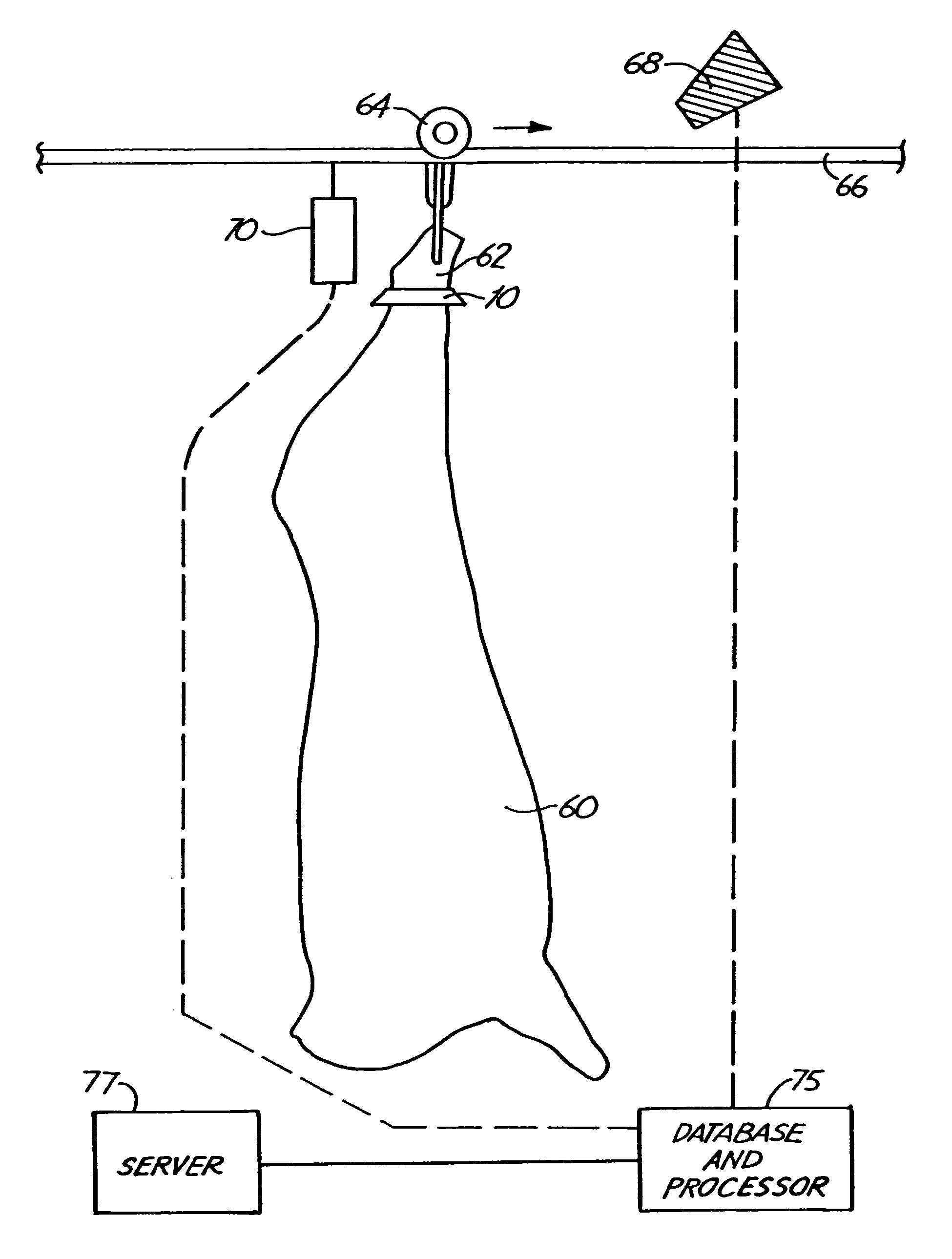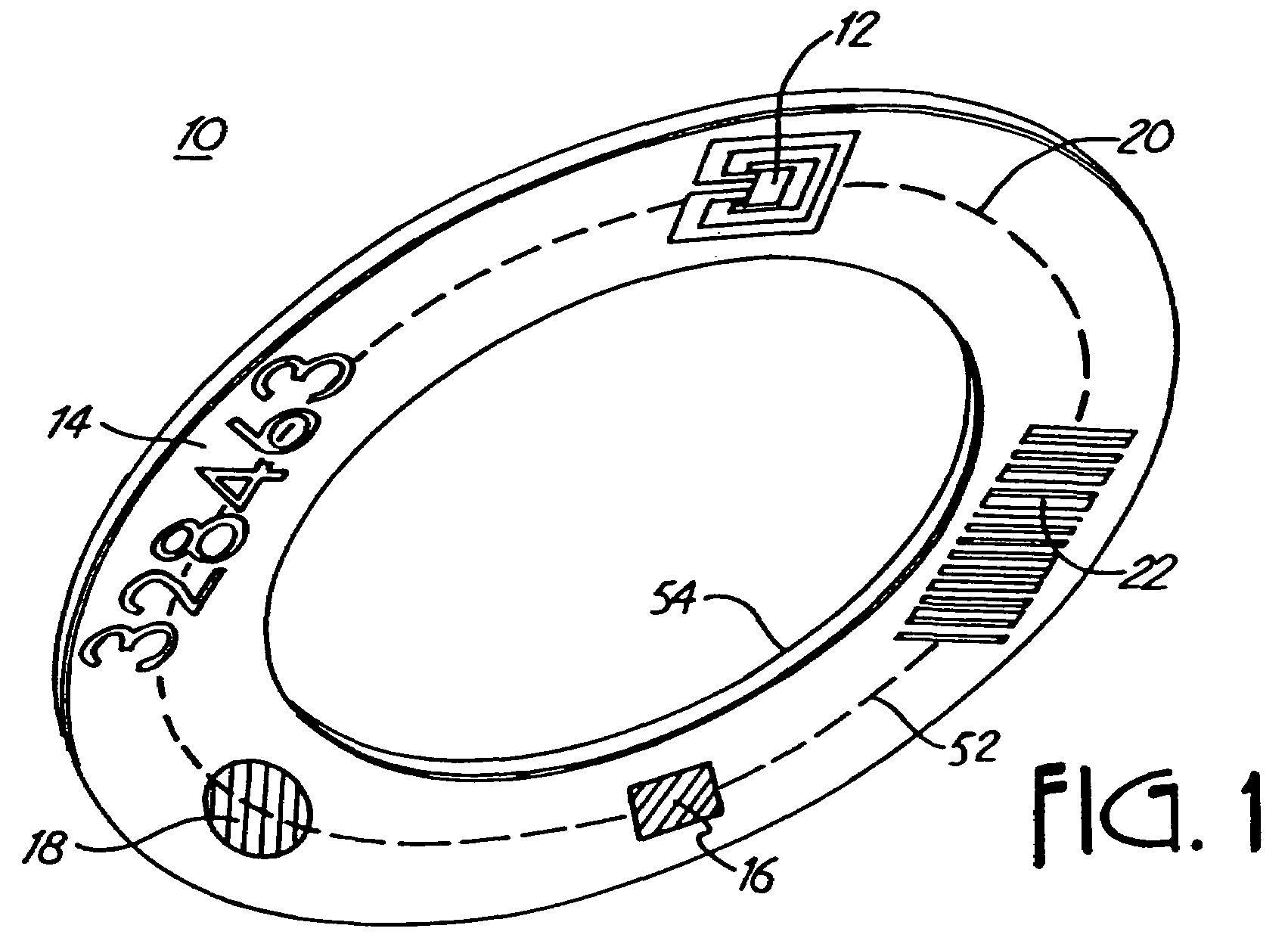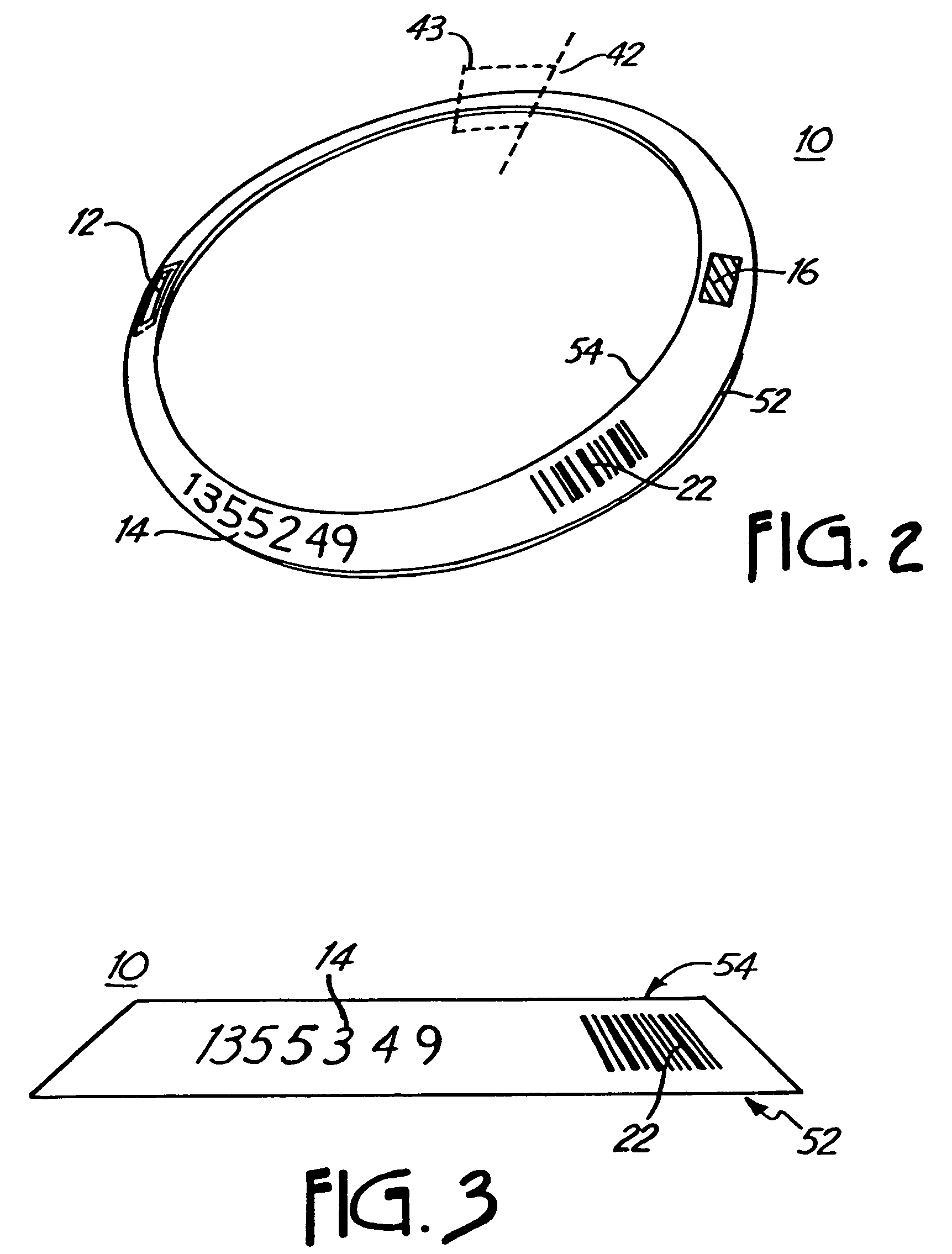Method and apparatus for tracking carcasses
a carcass and tracking technology, applied in the field of meat processing and tracking carcasses, can solve the problems of difficult maintenance, large amount of cleaning or maintenance, and difficulty in maintaining vision-based systems or trolley readers, which are frequently used in meat processing plants,
- Summary
- Abstract
- Description
- Claims
- Application Information
AI Technical Summary
Problems solved by technology
Method used
Image
Examples
first embodiment
[0029]FIG. 1 depicts the band 10 of the present invention. In this embodiment, the band 10 is of a flat shape, and is generally in the shape of a circular ring with a generally central opening. The band 10 has an annulus or inside ring selectively sized to fit over a limb or other portion of an animal carcass 60. In one embodiment, the opening is disposed off-center to, for example, cause the band 10 to rest is a desirable orientation when it is placed on the carcass 60.
second embodiment
[0030]In a second embodiment, as may be seen in FIGS. 2 and 3, the band 10 has a slight frusto-conical shape, such that the diameter of the band 10 at one side of the band 10 is greater than a diameter at a second side of the band 10. Referring to FIG. 3, for instance, a first side 52 (an outer or upper edge) of the band 10 has a greater diameter than a second side 54 (an inner or lower edge) of the band 10. A band 10 in such a frusto-conical shape may fit more smoothly upon a limb of a carcass 60 than bands 10 of differing shapes, although bands 10 of any shape may be used within the scope of the invention. In addition, a frusto-conical shape may facilitate stacking of bands 10 when the bands 10 are not in use. In the embodiment of FIGS. 2 and 3, the band 10 is circular in shape (see FIG. 2), although the band 10 may also be shaped as an oval, square, or in some other geometry that may allow the band 10 to be placed over a limb or other portion of a carcass 60.
[0031]In another embo...
PUM
 Login to View More
Login to View More Abstract
Description
Claims
Application Information
 Login to View More
Login to View More - R&D
- Intellectual Property
- Life Sciences
- Materials
- Tech Scout
- Unparalleled Data Quality
- Higher Quality Content
- 60% Fewer Hallucinations
Browse by: Latest US Patents, China's latest patents, Technical Efficacy Thesaurus, Application Domain, Technology Topic, Popular Technical Reports.
© 2025 PatSnap. All rights reserved.Legal|Privacy policy|Modern Slavery Act Transparency Statement|Sitemap|About US| Contact US: help@patsnap.com



